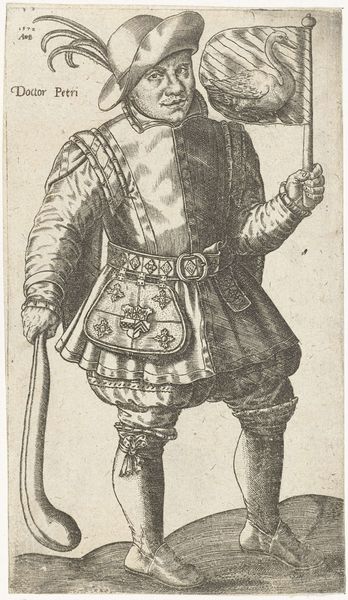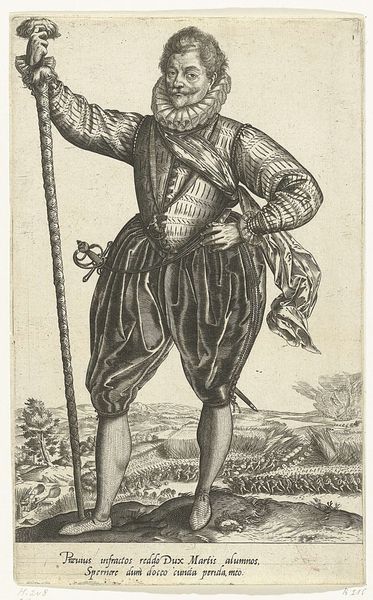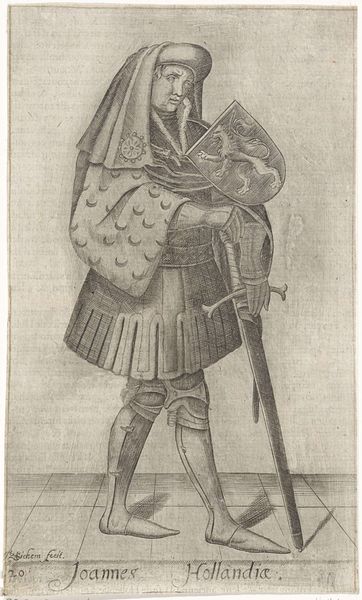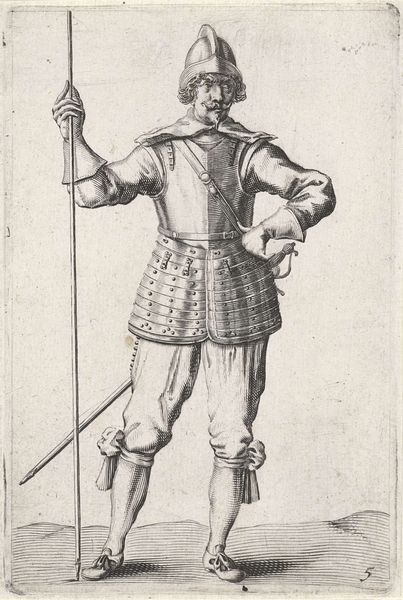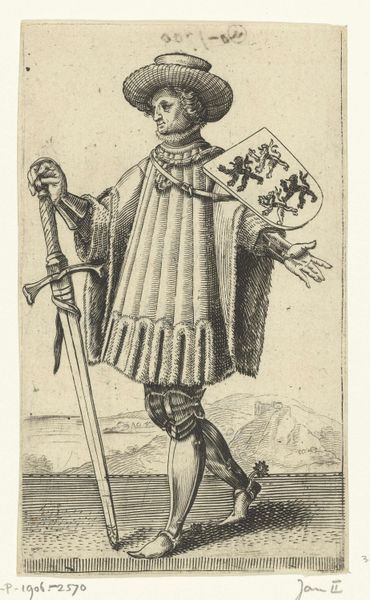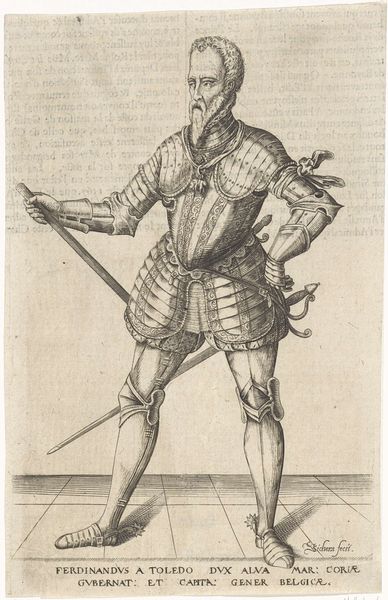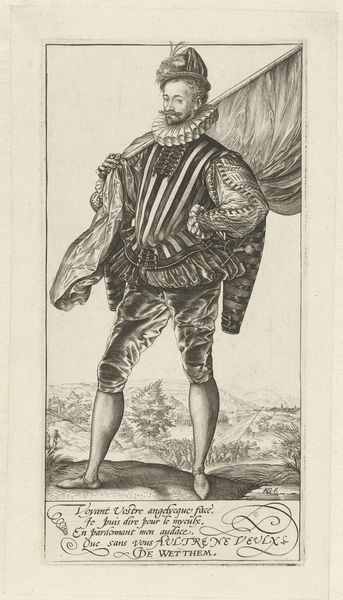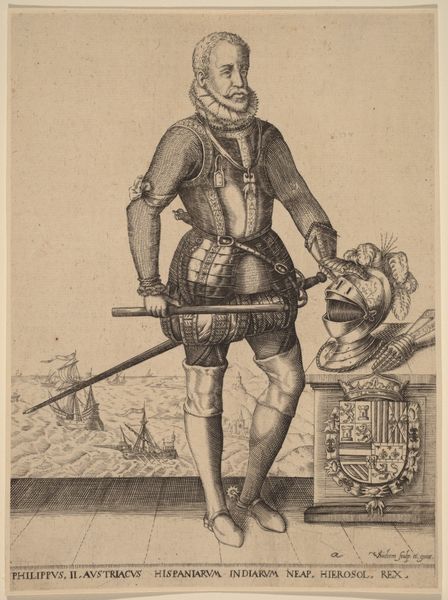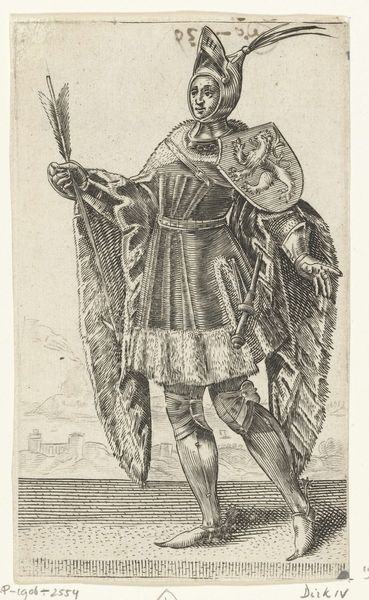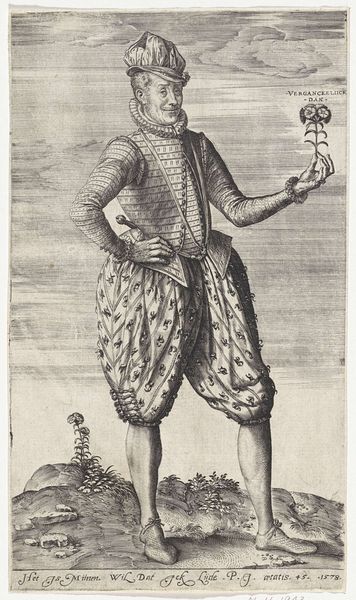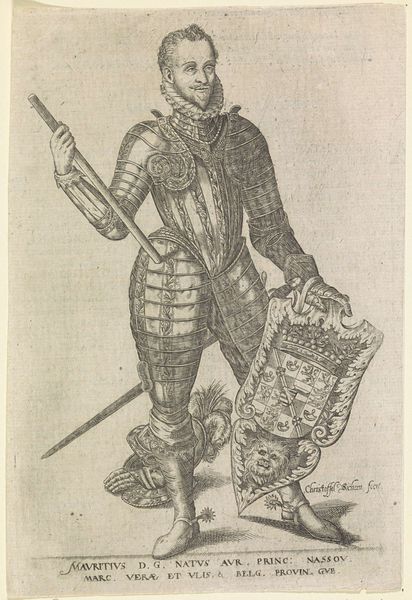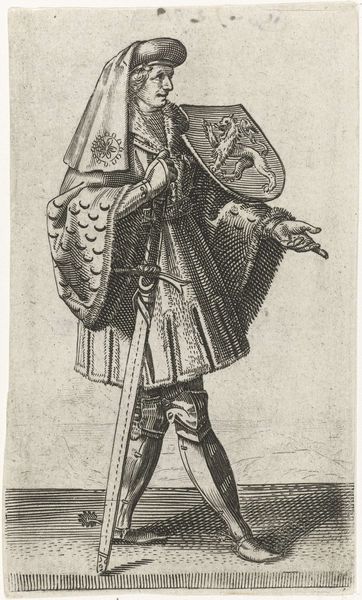
print, etching, engraving
#
portrait
#
baroque
# print
#
etching
#
history-painting
#
engraving
Dimensions: height 130 mm, width 80 mm
Copyright: Rijks Museum: Open Domain
Curator: This is a print dating from 1620 by Adriaen Matham, titled "Portrait of Philip III, King of Spain," now in the collection of the Rijksmuseum. Editor: It's stark, isn't it? All that intricate detail rendered in what looks like pure, unadorned labour. Look at the etched lines forming the textures on his stockings, the folds of the armor, and his resolute stance. I can almost feel the pressure of the plate against the paper. Curator: The portrait adopts the stylistic conventions of the baroque. It also conveys the figure of the King, emphasizing his regal status, though, by 1620, Phillip’s reign had begun to show signs of Spanish decline. It almost acts as a type of propaganda, broadcasting strength when cracks had begun to appear in the Spanish Empire. Editor: I see the armor less as a symbol of power and more as a carefully crafted, material object, perhaps made by artisans whose names history overlooks. Those textures you noted—the lace, the leather, the polished metal—they all speak to different processes, different crafts. How was this stuff made and by whom? Where did the materials come from? That is what interests me most. Curator: And the choice to represent the king in print, think about the democratizing effect of image circulation in the 17th century. Matham was essentially reproducing the image of the King for broader distribution, catering to the developing print market that created visibility and perhaps contributed to an image of authority. It moves this work into the realm of a kind of manufactured iconography. Editor: Exactly. Printmaking allowed Matham, or his workshop, to create multiple impressions. It speaks of the social reality of producing and consuming images back then. Curator: True. The act of circulating images could impact socio-political opinions in early modern Europe. That alone makes it worth considering within its complex history. Editor: The means of production and the culture it supported are right there in the fine, deliberately-laid lines. You made me consider aspects I would have missed. Curator: As with every historical portrait, viewing it within its time can bring its many dimensions into sharper focus. Thank you for your input.
Comments
No comments
Be the first to comment and join the conversation on the ultimate creative platform.
